#The Westinghouse Desilu Playhouse
Explore tagged Tumblr posts
Text
LUCY & THE SWANS
BALL, CAPOTE & PALEY

The new FX series "Feud: Capote vs. The Swans" depicts a world that Lucille Ball knew all too well - wealth, fame and celebrity. Although she does not inhabit the New York Society of Babe Paley, Slim Keith, Ann Woodward, C.Z. Guest, Gloria Guinness and others, she and her Desilu empire lie just outside of it - her influence on the era keenly felt.
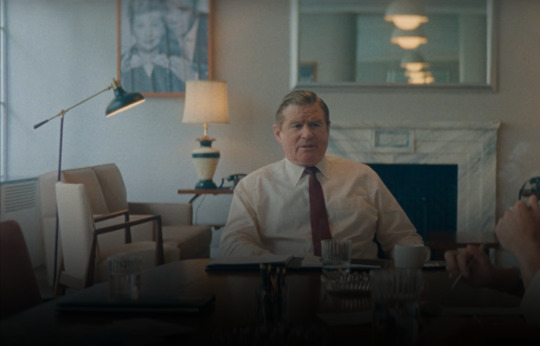
Episode 1 of the teleplay ("Pilot") begins in 1958, and takes us to the executive boardroom of CBS in New York. There, Bill Paley (Treat Williams) holds forth, a photo of Lucy and Desi prominently hovering over his shoulder.

In this room, the Paley and the CBS brass made programming moves played out on a schedule board. The Monday 9pm time slot is occupied by "I Love Lucy", with a small photo of Lucy and Desi (the same one that hung on the wall) tucked into the title card - as if they needed reminding of who they were! The only slight faux pas is that "I Love Lucy" (as a half hour series) did not run in 1958. Its final episode aired in May 1957. It then became an hour-long celebrity-driven musical comedy hour under the banner of "The Westinghouse Desilu Playhouse." Paley and CBS probably wanted Lucy and Desi for a 7th season, but Desi had other plans. He wouldn't kill the Ricardos (metaphorically) but relegate them to specials, interspersed with Desilu productions of new drama and comedy. It is possible that the action of "Feud" in this scene lies somewhere in that murky period between Desi's plans, and Paley's wishes for a seventh season of the half-hour format.

In actuality, during 1958, the 9pm Monday time slot was occupied by "The Danny Thomas Show" (filmed at Desilu) and "The Ann Sothern Show" (produced by Desilu). Monday also featured the Desilu Western "The Texan," making the only half hour of CBS's Monday primetime NOT created by Lucy and Desi "Father Knows Best."
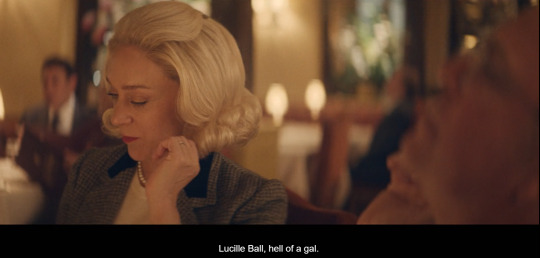
Episode 6 ("Hats, Gloves, and Effete Homosexuals") set in 1978 includes a luncheon conversation at La Cote that mentions Lucille Ball and Lucie Arnaz. Truman's new boyfriend Rick (Vito Schnabel) is a handyman who once fixed Ball's air conditioner in Palm Springs.

Truman has promised to bring Rick to see They're Playing our Song on Broadway starring Lucie Arnaz. Rick says that he met little Lucie while she was swimming laps.
BILL & BABE PALEY
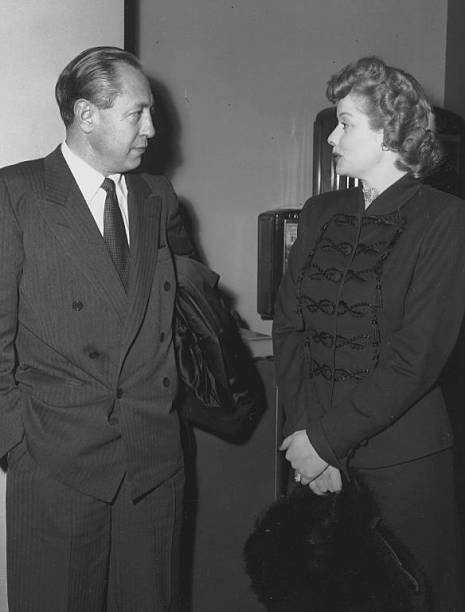
The power and influence of William S. Paley cannot be underestimated. He literally built CBS (the Columbia Broadcasting System) from a small radio station to a multi-media conglomerate, serving as Chairman for much of its existence. He shepherded CBS from radio to television, and was responsible for giving the green light to Lucille Ball making the transition from "My Favorite Husband" to "I Love Lucy," bringing her real-life husband along for the ride. Without Paley and Lucy, CBS would not have gotten a foothold in an industry dominated by the National Broadcasting Corporation (NBC).
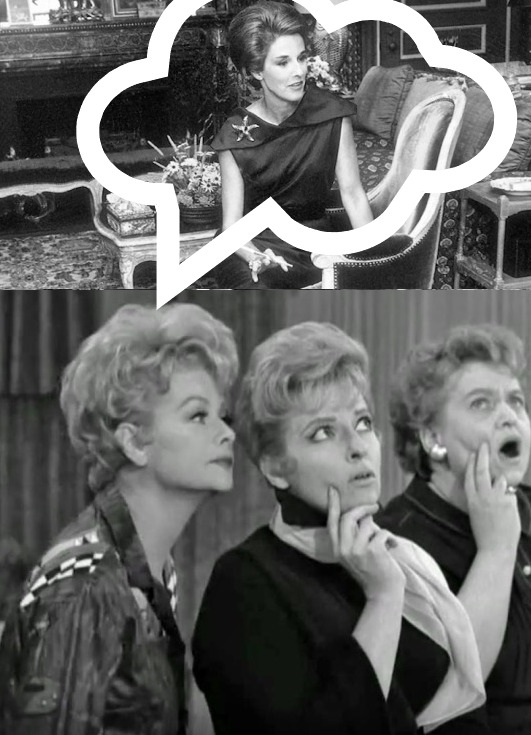
Paley's second wife was socialite Barbara Cushing Mortimer, who he married the year before he met Lucille Ball. Mortimer is best known as Babe Paley, and she was Truman Capote's favorite of the Swans. In "Lucy's Barbershop Quartet" (1963), the group needs to find a replacement singer for the group and Viv suggests the unseen character of Barbara Cushing, who is a soloist in their church choir. Although Lucy, Viv, Thelma, and Dorothy were definitely not swans (more like Danfield Ducks) the writers were tipping their hat to the big boss's wife.

A few years later, in "Lucy Meets Danny Kaye" (1964), Kaye telephones Bill Paley to see if he has any spare tickets for his show to give fan Lucy. The best he can do is tickets to "The Jackie Gleason Show." Paley does not appear, nor do we hear his voice.

In real life, Paley and Ball were both in the first group of inductees to the Television Academy Hall of Fame in 1984. Ball and Paley sat at the same table together at the ceremony.
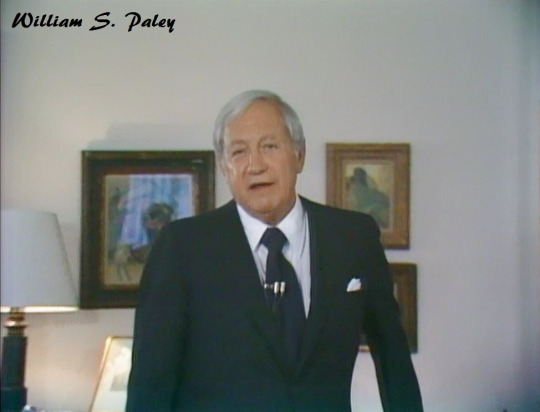
In 1976, he joined those paying tribute to Lucy on "Lucy and CBS: The First 25 Years." Paley and his wife Babe had homes in Manhasset Long Island, and Squam New Hampshire, respectively known as Kiluna Farm South, and Kiluna Farm North, where they entertained a myriad of celebrities, Lucille Ball among them.
TRUMAN CAPOTE

On screen Lucille Ball had little to no interaction with writer Truman Capote. But in her personal life, Ball was guest at at least one of his lavish parties. Gary and Lucy's photo album included a photo of the Mortons at a December 13, 1975 party hosted by Capote, Allan Carr, and John O'Shea in Lincoln Heights, a wealthy neighborhood of Los Angeles. The 'mug shot' was part of a party game where guests were 'arrested' and forced to pay bail in order to get released. The money was usually donated to the host's favorite charity.
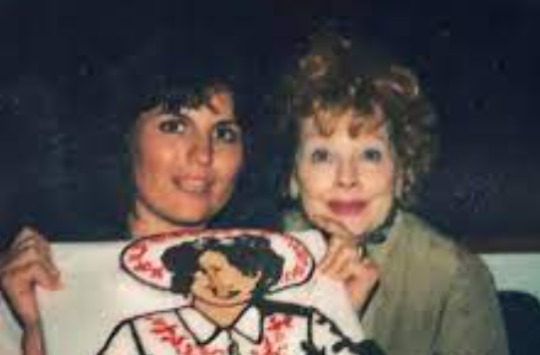
In July 1978, Capote joined Lucille Ball at Westbury Music Fair to see Lucie Arnaz perform in "Annie Get Your Gun".
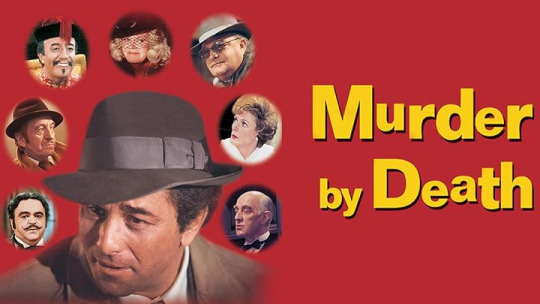
Capote's one foray into acting was in Neil Simon's Murder By Death (1976), a camp comedy send-up of Agatha Christie-style murder mysteries where Capote played the eccentric host, Lionel Twain. The film featured a few stars with close connections to Lucille Ball.
Peter Sellars (Sidney Wang) starred in Will The Real Mr. Sellars...?, an oddball film from 1969 with a very brief cameo by Lucille Ball courtesy of hidden camera footage.
Elsa Lanchester (Jessica Marbles) famously guest-starred on "I Love Lucy" as a woman who may - or may not be - a hatchet murderess. In 1973, she appeared on "Here's Lucy" as kooky bank robber Mumsie Westcott.
Although screen writer Neil Simon never wrote for Lucille Ball, or even appeared on the same screen with her, they did share credits on two television shows. He was a staff writer on “The Garry Moore Show,” which Lucy appeared on in 1960. Simon and Ball were both featured on “Bob Hope’s World of Comedy” (1976), but were not onstage at the same time. It was Lucie Arnaz who worked closest with Simon. She starred on Broadway in They’re Playing Our Song (for which Simon wrote the libretto) in 1978. She then took over the role of Bela in Simon's Pulitzer Prize-winning Broadway play Lost in Yonkers in 1992.
MISC. SWANS
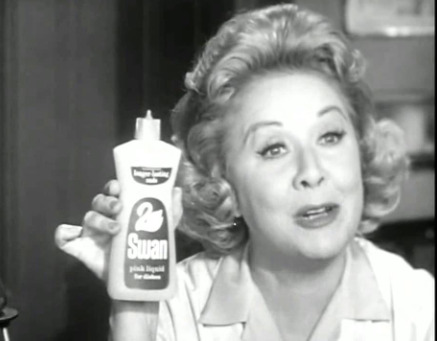
Vivian Vance doing an in-character commercial for Swan dish soap on "The Lucy Show." Swan was made by Lever Brothers, and was discontinued in 1974.
SWAN SONGS

LUCY: "Would you begrudge an expectant swan her song?" RICKY: "You seem to forget that this particular swan has no talent." ~ Lucy's Show Biz Swan Song (1952)
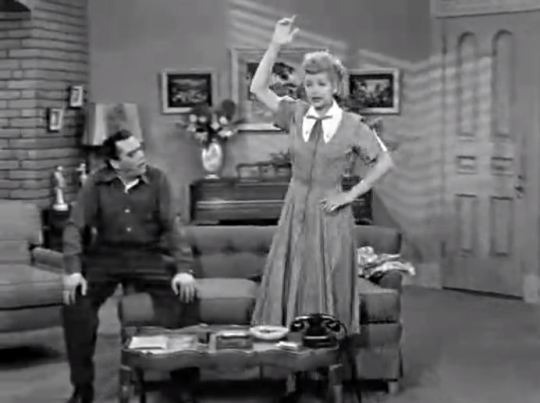
LUCY: “It’s time for that swan to hit the come-back trail.” FRED: “That swan’s got a little ham in it.” ~ The Indian Show (1953)
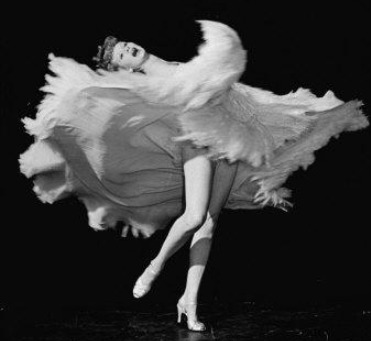
#Capote and the Swans#Truman Capote#Swans#Feud#Feud: Capote vs the swans#Bill Paley#William Paley#Babe Paley#Capote#Paley#CBS#TV#Lucille Ball#Desi Arnaz#I Love Lucy#1958#Murder By Death#Vivian Vance#Lucie Arnaz#Gary Morton#Danny Kaye#Treat Williams
16 notes
·
View notes
Photo

Character Actress
Adele Mara (born Adelaida Delgado; April 28, 1923 – May 7, 2010) Actress, singer, and dancer, who appeared in films during the 1940s and 1950s and on television in the 1950s and 1960s.
In 1955 Mara appeared as Sarita on the TV western Cheyenne in the episode "Border Showdown." In 1958, Mara played Maria Costa in the Bat Masterson episode "Double Showdown" with Gene Barry. In 1961, Mara appeared as a nurse with Cesar Romero on CBS's The Red Skelton Show in a sketch titled "Deadeye and The Alamo". About this time, she guest-starred on the NBC Western series The Tall Man with Clu Gulager, as well as three episodes of Maverick (one with James Garner and Jack Kelly and two with only Kelly), and episodes of Laramie, Tales of Wells Fargo with Dale Robertson and The Life and Legend of Wyatt Earp with Hugh O'Brien. She also appeared in the Alfred Hitchcock Hour episode "House Guest" in 1962.
Her other television credits include:
The Lone Wolf
Adventures of the Falcon
Big Town
Soldiers of Fortune
Studio 57
The Millionaire
The Adventures of Rin Tin Tin
Conflict
Meet McGraw
The Magical World of Disney
Casey Jones
Tales of Wells Fargo
Westinghouse Desilu Playhouse
77 Sunset Strip
Markham
Stagecoach West
Dante
The Red Skelton Hour
Bringing Up Buddy
Lockup
Bachelor Father
Thriller
The Tall Man
Cool Million
Wheels
(Wikipedia)
7 notes
·
View notes
Text
So, I’m gonna do reviews of The Twilight Zone, as I watch it.
I’ve seen a handful of episodes from the original run, and I’ve seen the Peele series. But, recently, I’ve started from the beginning. Well, not quite the beginning; I started with episode 1, but I DO plan to watch “The Time Element,” the concept pilot from Westinghouse Desilu Playhouse.
I decided this about six episodes in, so, here we go. This one’s gonna be a long post, so I’m keeping the reviews under the cut.
The TLDRs:
101 "Where Is Everybody?"
A solid start the series. And one that’s certainly an interesting watch in a post-outbreak world.
102 "One for the Angels"
Wow. WiE may have been a solid start, but this one is just…chef’s kiss.
103 "Mr. Denton on Doomsday"
A story about gun violence in 1959? Dang, Rod, you really WERE ahead of your time. It was good a good one.
104 "The Sixteen-Millimeter Shrine"
I never noticed how much Allison Janney looks like Ida Lupino, before. Although, come to think of it, this may be the first thing I’ve actually seen Lupino in. This was a pretty good episode.
105 "Walking Distance"
Time travel episode! Pre-Opie Ron Howard! Inflation! Wait…
An interesting twist on what could've just been a BttF.
106 "Escape Clause"
Wow, if I had a nickel for every TZ episode in which a character played by an actor also known for his role as the Mad Hatter makes a sketchy deal to cheat death, I’d have two nickels. Which isn’t a lot, but it’s weird that it happened twice, right?
Something had to be the first stinker.
101 "Where Is Everybody?"
A solid start the series. And one that’s certainly an interesting watch in a post-outbreak world.
Honestly, when I was watching, I kept waiting for atom bomb sirens. I honestly thought Mike had wandered, amnesiatic, onto a test site. One he was working on. Hell, a mannequin even showed up, at one point. So, I was genuinely surprised, when it turned out to be an isolation chamber-induced hallucination.
Naturally, this raises a few questions:
Why are still sending him into space, if they had to pull him out?
Why are they sending him alone? I know Apollo 11’s still ten years away, but seriously!? Setting aside they isolation stress, what if another problem happens? They can’t just have one guy up there for, I guess, twenty days!
One thing that’s cool: That’s Courthouse Square. From Back to the Future. Imagine George McFly tuning into this episode, while in college, and seeing a backlot strongly resembling his own hometown in this episode. And now, of course, I’m wondering if, in the BttF universe, George ever wrote any TZ episodes.
102 "One for the Angels"
Wow. WiE may have been a solid start, but this one is just…chef’s kiss.
Ed Wynn really surprised me with his performance, too, in a non-comedic role (turns out, the same year, he played Albert Dussel in The Diary of Anne Frank, which earned him an Oscar nod). A good thing, too, because so much of this episode is riding on it. In-universe, no less.
Make no mistake, the goofy Uncle Albert DOES come through. And, it’s got to. Lewis sells toys and even gives them away to children. And the kids love him. It’s never presented as anything sus, as it would on other shows, today. To Lewis, these are the grandchildren he never had.
Of course, from the moment Death greets him in his apartment, you know exactly where this is going. Lewis’ expiration date is coming, and he’s gonna make a pitch to put it off. So, of course, he makes a pitch. For a pitch. And you just know it’s gonna be one of the kids who takes his place. So, Maggie stops by, narratively deciding her fate.
And, the rest of this episode is Lewis making his literal pitch for the angels. One specific angel. The angel of death. And, that’s all that matters. His entire goal, from then on, is to convince Death to take himself, instead of this little girl.
And, you know what? Death is rooting for him. You can see it in his face. And, yeah. He’s gonna let Lewis take his briefcase to Heaven. Because, why not?
103 "Mr. Denton on Doomsday"
A story about gun violence in 1959? Dang, Rod, you really WERE ahead of your time.
Although having Fate as a central character right after an episode with Death may seem a bit repetitive, the two stories do such different things with the characters that it’s not. And, thank goodness for that; it would’ve felt stale (more on that in a later review).
So, yeah. Al buys a potion that makes him the fastest gun in the West, and so does his opponent. And they end up shooting eachother’s trigger hands. And they’re thankful for it. And, that’s the story. It was good.
Incidentally, this is the first period episode of TZ. And, there won’t be a truly future-set episode, until episode 7 (the next one on my watchlist). We get a time travel story in two episodes (and the concept pilot one might’ve been, as well), though.
104 "The Sixteen-Millimeter Shrine"
I never noticed how much Allison Janney looks like Ida Lupino, before. Although, come to think of it, this may be the first thing I’ve actually seen Lupino in.
This is an interesting one. A story about a once-big star yearning for the olden days. Barbara Jean wants her comeback. She’s offered a big role, but she won’t play any mothers. I think the exec even said the character was 40. Lupino was just 41, when this aired, and I think her character is implied to be in her sixties.
Unfortunately, the story frames it more as a Barbara Jean problem than a Hollywood sexism problem. Otherwise, this was a pretty good episode.
I think it’s also the first to not offer an explanation for the strange goings-on. Unless “The Time Element” didn’t, either. 16mm is preceded by stories featuring isolation-induced hallucinations and two supernatural beings. In this one, she just enters her film-land. And that’s it. Sometimes, we don’t need an explanation.
Also, I wonder if some of the footage in the episode is archived footage of Lupino in other roles. Side question: Was the main character intentionally named after Marilyn Monroe? If so, YIKES, that did not age well, particularly if one considers the ending an allegory for suicide.
This is also the first time I found myself drawing comparison to a Peele-era TZ episode: “Downtime” almost feels like a spiritual sequel to this episode. Obviously, it’s not one-to-one, by I do wonder if Peele was influenced by this episode when writing it.
105 "Walking Distance"
Time travel episode! Pre-Opie Ron Howard! Inflation! Wait…
So, at first, I thought this was gonna be a full BttF. Martin (!) has to bring his parents together, so he doesn’t cease to exist. Instead, he ends up in his own childhood. Which is an interesting twist. It’s surprising how long it takes him to notice, though.
And, it’s not just that he’s stuck in the past. He had to go to the past to remember who he is. But, ya gotta wonder: What if he had ended up stuck? What if he had to take the slow path back?
Ultimately, however, that doesn’t happen, and he ends up having to go back to the future, so to speak. Incidentally, another no-explanation story. He just walked into his childhood. And walked back. Sadly, due to the time limit, we don’t get to see any era differences beyond the soda shoppe.
106 "Escape Clause"
Wow, if I had a nickel for every TZ episode in which a character played by an actor also known for his role as the Mad Hatter makes a sketchy deal to cheat death, I’d have two nickels. Which isn’t a lot, but it’s weird that it happened twice, right?
This episode shares its title with the third Santa Clause movie, and it’s about as good. Look. 284 episodes, a concept pilot, two “album” movies (totaling six parts), a book of 19 short stories, 176 audio dramas, and a ride — they’re not all gonna be winners. Something had to be the first stinker.
Learning that this one was third in the production order certainly explains things. Watching it, it certainly felt like a first draft of OftA (which was eighth, production-wise). And, as a result, I couldn’t help but compare this one to it.
The problem is…Walter gets immortality, and he spends the rest of the episode thrill-seeking. Here I was, hoping for a “Who wants to live forever?” plot, and I get NOTHING. No old age makeup, when he looks in the mirror. No speculation about the then-future. NOTHING!
Then! When he turns himself in for his wife’s death, if he’s trying to get the Chair, why doesn’t he wave his right to a lawyer? Maybe, that wasn’t a thing in 1959; I wasn’t alive, then. And, to top it all off, you would think a thrill-seeker like him would attempt a prison break. What’s he gonna do? Get shot and killed? But, no. He just…ends the deal.
If anything, this is a story that maybe should’ve been shelved for S4, when they were doing hour-longs. Because, there’s so much lost potential, and just five productions later, they’d be making a better version, anyway.
The one saving grace is the cast. ESPECIALLY Thomas Gomez, who is just FULLY chewing the scenery as the Devil. He gave a Bobby Carlyle Rumpelstiltskin-type flair to the role that I just love. And the smoking stamp? Such a nice touch. His first scene (not so much the second; see above) was just perfect.
#jiminy watches tz#the twilight zone#where is everybody#one for the angels#mr denton on doomsday#the sixteen-millimeter shrine#walking distance#escape clause#Tw: suicide mention#just in case
2 notes
·
View notes
Text

Between 1958 & 1960 Desi Arnaz served as host & producer of the ‘Westinghouse Desilu Playhouse’ anthology series. Two series were spun-off from it: “The Untouchables” and Rod Serling’s “The Twilight Zone.”
31 notes
·
View notes
Text

Tony Randall dreams of boats
#tony randall#carl reiner#vintage tv#westinghouse desilu playhouse#anthology series#1950s tv#vintage tv ad
3 notes
·
View notes
Text








JAMES MACARTHUR.
Filmography
1955 Climax!
1957 The Arthur Murray
1957 The Young Stranger
1958 General Electric Theater
1958 Studio One
1958 Studio One
1958 The Light in the Forest
1959 Westinghouse Desilu Playhouse
1959 Third Man on the Mountain
1959 Wagon Train
1960 Kidnapped
1960 Night of the Auk
1960 Swiss Family Robinson
1960 Play of the Week
1961 Walt Disney's Wonderful World of Color
1961 Play of the Week
1961 The Untouchables
1961 Bus Stop
1962 Insight
1962 Wagon Train
1962 The Interns
1962 The Dick Powell Show
1963 Walt Disney's Wonderful World of Color
1963 Walt Disney's Wonderful World of Color
1963 Walt Disney's Wonderful World of Color
1963 Walt Disney's Wonderful World of Color
1963 Sam Benedict
1963 Spencer's Mountain
1963 Arrest and Trial
1963 Cry of Battle
1963 Amos Burke: Secret Agent
1963 The Eleventh Hour
1963 The Great Adventure
1964 The Great Adventure
1964 The Alfred Hitchcock Hour
1965 The Truth About Spring
1965 The Bedford Incident
1965 The Virginian
1965 The Battle of the Bulge
1966 Night of Violence
1966 branded
1966 12 O'Clock High
1966 Gunsmoke
1967 Dateline: Hollywood
1967 Walt Disney's Wonderful World of Color
1967 Combat!
1967 The Love-Ins
1967 Insight Billy Thorp
1967 Hondo
1967 Tarzan
1967 Bonanza
1967 Death Valley Days
1968 Death Valley Days
1968 The Angry Breed
1968 Premiere
1968 Hang 'Em High
1968–
1979 Hawaii Five-O Detective
1971 The Movie Game
1971 The Hollywood Squares
1972 The Hollywood Squares
1973 The Hollywood Squares
1977 Battle of the Network
1978 Battle of the Network Stars
1978 Fantasy Island Fantasy Island The Funny Girl / Butch and Sundance
1979 Time Express
1981 The Island of Fantasy
1994 The Wonderful World of
1997 Hawaii Five-O Governor
1997 Light Lunch
1998 Storm Chasers: Revenge of the Twister
2002 Swiss Family Robinson:
2002 Inside TVLand: 40 Greatest
2002 Inside TVLand: Cops on
2005 The 100 Greatest Family Films
2006 The 100 TV Quotes and Greatest Catch Phases
2007 Entertainment and TVLand
2008 The Age of Believing: The Disney Live Action Classics.
Créditos: Tomado de Wikipedia
https://es.wikipedia.org/wiki/James_MacArthur
16 notes
·
View notes
Text
The Twilight Zone: Facets of Filmmaking
On October 2nd, 1959, the first episode of The Twilight Zone was aired, making television history and changing anthology forever. While this might seem like the beginning of The Twilight Zone’s story, as a matter of fact, it was merely the first victory.
You see, The Twilight Zone was not Rod Serling’s first attempt to get his ideas on screen.
In his youth, Rod Serling had two passions most visible in his stories: Pulp fiction novels, and criticism of society. While the two seem like they might not mix, during his screenwriting career in the mid 1950s, he made several attempts to combine the two, only for the network censors to reject his screenplays, or worse, take them, declaw them by removing the political commentary, and submit them anyway. After years of this, Serling was getting frustrated.
However, in the late 1950s, Serling got his breakthrough.

In 1958, CBS bought one of Serling’s scripts, entitled ‘The Time Element’ to produce on its anthology: Westinghouse Desilu Playhouse. The script was about a man with a recurring dream: failing to warn about the Pearl Harbor attack, and it was received with overwhelming positivity from both critics and audiences. Encouraged by this, CBS began discussion with Serling about producing an anthology show, and thus, The Twilight Zone was born.
Over its five year run of 156 episodes, Rod Serling wrote or adapted nearly two-thirds of stories used on the show, (along with writers Richard Matheson and Charles Beaumont) using the ‘science fiction/fantasy’ angle as a screen for his political and social commentary. Thanks to the genre disguise, the censors didn’t worry about it nearly as much, and Serling’s scripts were produced largely as he originally intended. After his previous experiences, he was wary to relinquish control of his show, and as a result, the first installation of The Twilight Zone franchise bears his distinctive fingerprints.

At first, The Twilight Zone was a hard show to sell. Nobody thought it would amount to anything of importance, (science fiction was still considered a largely juvenile genre at the time) and Serling ended up being not only the brains behind the show, but the face of it as well. While initially uncomfortable with appearing in front of the camera, Serling’s opening and closings of each show became staples of the show, much imitated, but rarely done as well as the original.
For the most part, however, the show was written and filmed according to Serling’s wishes. There were a few exceptions, such as the six episodes shot on videotape instead of film due to budget constraints, or the lengthening of episodes from 25 minutes to 50 minutes in season four. (The format reverted back to 25 minutes in season 5.)
Rod Serling had worked hard as the executive producer, writer, narrator and creator of The Twilight Zone, but by the end of season five, he was worn out, exhausted of ideas. After writers being shuffled around, script shelvings, and a drop of ratings, at the end of a troubled season five, The Twilight Zone was cancelled, and taken off of the air, not seen again until its revival in the 1980s. Serling sold his share of the show, and left the supernatural anthology scene until Night Gallery in 1969. So ends the story of The Twilight Zone.

The Twilight Zone is the story of one man’s desire to bring his ideas and thoughts to the screen in ways that television wasn’t really ready for at the time, and in doing so, forever changed television. It wasn’t the intention to do so, but that’s the end result, and television (and speculative fiction) is all the better for it.
Join me for one last article as next time we take one last look at The Twilight Zone in our Final Thoughts. If you have any thoughts, questions, suggestions, recommendations, or just want to say hi, don’t forget to leave an ask! Thank you all so much for reading, and I hope to see you in the next article.
#The Twilight Zone#TV#Television#TV-PG#50s#Horror#Science Fiction#Sci-Fi#Fantasy#Mystery#Rod Serling
1 note
·
View note
Photo

It's National Twilight Zone Day! The first ever screenplay that ended up launching 'The Twilight Zone' aired as an episode of Westinghouse Desilu Playhouse in 1958. Written by Rod Serling, the story was called "The Time Element" and was hosted by Desi Arnaz. It was so well-received that CBS immediately ordered more stories like it. Those stories would eventually become what is now known as 'The Twilight Zone.' #desiarnaz #desilu #lucyball #thetwilightzone #rodserling #nationaltwilightzoneday #classictelevision #westinghouse #desiluplayhouse #firsthost https://www.instagram.com/p/CADf6heHhz5/?igshid=1hqcfoj5vyi6d
#desiarnaz#desilu#lucyball#thetwilightzone#rodserling#nationaltwilightzoneday#classictelevision#westinghouse#desiluplayhouse#firsthost
1 note
·
View note
Photo

Jane Russell as Lily Travers in the episode, “Ballad For A Badman” for the television series, WESTINGHOUSE DESILU PLAYHOUSE. It originally aired, January 26th, 1959.
The costume Jane is wearing, she also wore in the “Any Gal From Texas” number in THE FRENCH LINE (1954). It was slightly modified for this production.
57 notes
·
View notes
Photo










Circa late ‘50s/early ‘60s CBS glass title slides, including:
Johnny Ringo The Phil Silvers Show The Orange Bowl Tonight with Belafonte The Revlon Revue The Garry Moore Show Keep Talking (with Vincent Price) United States Steel Hour Name That Tune Westinghouse Desilu Playhouse
19 notes
·
View notes
Text
Lucy in Beverly Hills
Part 1 ~ The Cast
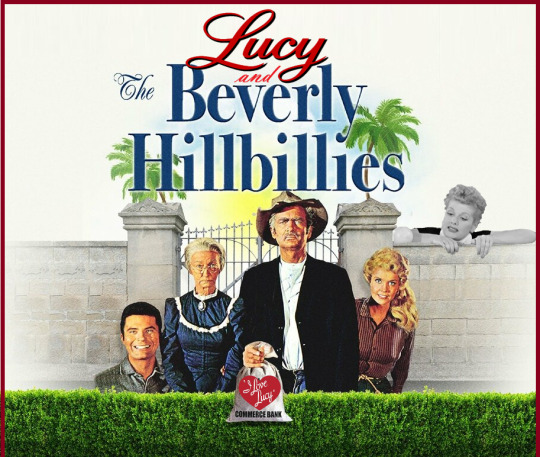
Although thematically the shows created by Lucille Ball were worlds apart from the down-home humor at the Clampett Mansion, there were artistic and creative commonalities that are worth discussing.
"The Beverly Hillbillies" ran from 1962 to 1971, while "The Lucy Show" ran from 1962 to 1968, both on CBS TV. Interiors were filmed at General Service Studios, where "I Love Lucy" began filming until it moved to larger quarters.
Like Jed Clampett, Lucy Carmichael and Lucy Carter are single parents, raising teenage girls, a popular trope of the 1960s and '70s.

The Desilu sitcoms "I Love Lucy," "Make Room for Daddy," "The Andy Griffith Show," and "Gomer Pyle USMC" are all related shows with characters in common much in the same way the Henning sitocms, "The Beverly Hillbillies," "Petticoat Junction" and "Green Acres" were related. Interestingly, "The Beverly Hillbillies" was mentioned during two episodes of "The Danny Thomas Show", in 1963 and 1964.
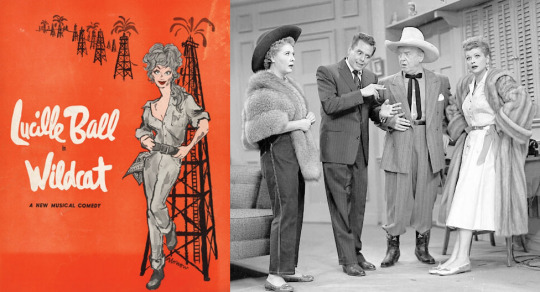
Jed Clampett's fortune is made from striking oil. In the 1960 Broadway musical, Lucille Ball played a wildcatter looking to find black gold. On "I Love Lucy," new neighbors the O'Briens move from Texas, where they made their fortune in oil. Soon the Ricardos and Mertzes have dreams of riches from Texas tea.
Animal trainers Frank and Juanita Inn worked on both shows, as well as on "Here's Lucy."
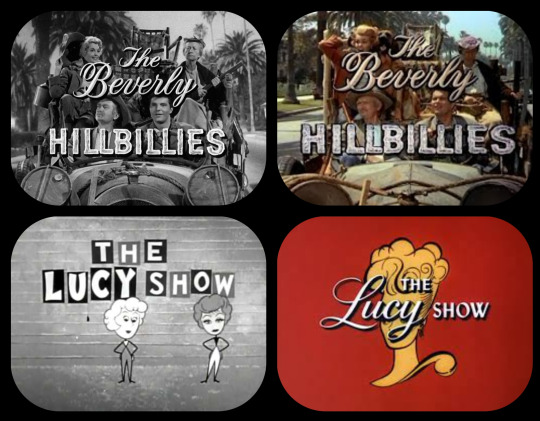
Both shows went from black and white to color in October 1965. Although "The Lucy Show" had filmed its second season in color (1963-1964), CBS declined to air it in color.
Editor Dann Cahn (1963 to 1964), was also an editor for "I Love Lucy" and many Desilu shows.
Shared Casting
Their “Beverly Hillbillies” characters are in parentheses, followed by their Lucycom / Desilu credits.
Irene Ryan (Granny) performed with Lucille Ball on a May 3, 1949 episode of "The Bob Hope Radio Show." In 1963, Ryan and Ball both appeared on CBS specials featuring their TV shows.
Buddy Ebsen (Jed Clampett) appeared in a 1958 episode of "The Westinghouse-Desilu Playhouse" introduced by Desi Arnaz. He appeared with Lucille Ball on several CBS specials and numerous award shows.
Donna Douglas (Ellie Mae Clampett) performed in a 1960 episode of Desilu's helicopter series "Whirlybirds." She was seen with Lucille Ball on a 1963 CBS special "The Stars' Address".
Max Baer Jr. (Jethro Clampett) was seen with Lucille Ball on a 1963 CBS special "The Stars' Address".
Raymond Bailey (Millburn Drysdale) never acted opposite Lucille Ball, but was seen in episodes of Desilu's "The Whirlybirds," "The Untouchables," "The Ann Sothern Show" and "Westinghouse-Desilu Playhouse" introduced by Desi Arnaz.
The bankers of "The Lucy Show" (Theodore J. Mooney) and "The Beverly Hillbillies" (Millburn Drysdale) were remarkably similar: loud, quick-tempered, miserly, abusive to their secretaries, and willing to grovel and sacrifice their dignity to land a big account.
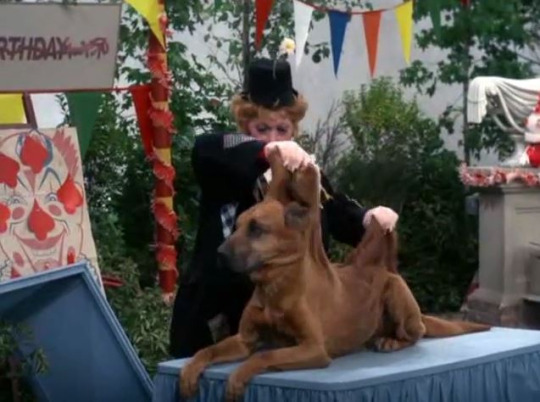
Stretch (Duke) the Clampett's lethargic bulldog, also played Thunderbolt on "Kiddie Parties, Inc." (1963) on "The Lucy Show." Stretch was one of Frank Inn's biggest stars.
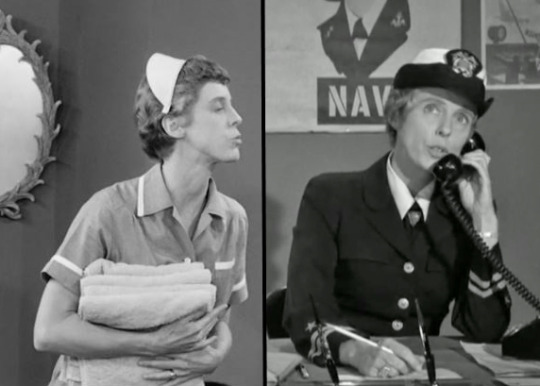
Nancy Kulp (Miss Jane Hathaway) played the Cockney maid who teaches Lucy Ricardo ow to curtsy in "Lucy Meets the Queen" (1955). She also appeared in the Lucille Ball and Desi Arnaz film Forever Darling, again playing a maid. Kulp returned to Desilu for a 1959 special with Milton Berle and Lucille Ball and a 1962 episode of “The Lucy Show” where she played Navy Officer Jane Corey.
Miss Jane's relationship to Mr. Drysdale was not dissimilar to Lucy Carmichael's relationship to her banker boss, Mr. Mooney.

Bea Benadaret (Cousin Pearl Bodine) first starred with Lucille Ball on her radio series “My Favorite Husband” (1948-1951), primarily as best friend Iris Atterbury. Benadaret was Ball’s first choice to play Ethel Mertz on “I Love Lucy,” but she was already contracted to play Blanche Morton on “The George Burns and Gracie Allen Show”, another best friend character. Ball still managed to cast her as a one-off character, Miss Lewis, an elderly spinster, on season one of “I Love Lucy.”
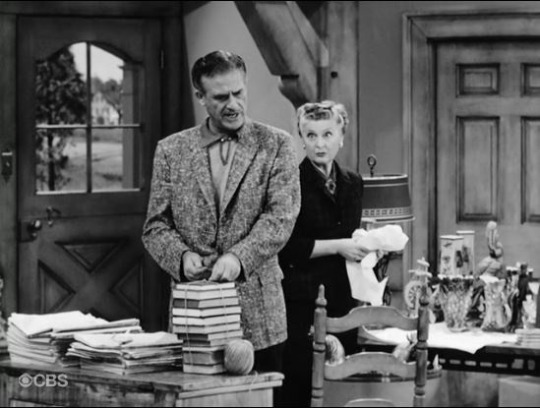
Frank Wilcox (John Brewster) appeared with Lucille Ball in the films Her Husband’s Affairs (1947) and The Fuller Brush Girl (1950). He played Frank Spaulding, owner of the Connecticut house in "Lucy Wants To Move To The Country" (1957).
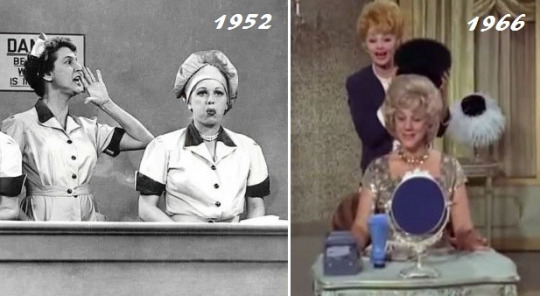
Elvia Allman (Elverna Bradshaw) was heard with Lucille Ball on “My Favorite Husband” before playing the strident Candy Factory Forewoman on “I Love Lucy.” Allman returned to the show as one of Minnie Finch’s neighbors in “Fan Magazine Interview” (1954) and prim magazine reporter Nancy Graham in “The Homecoming” (1955). She made two appearances on “The Lucy–Desi Comedy Hour“ - first as Ida Thompson, Westfield’s PTA director, then as Milton Berle’s private secretary. Allman would also be seen on two episodes of “The Lucy Show" as a customer in a department store and the manager of an employment agency. Allman’s final screen appearance with Lucille Ball reunited her with Bob Hope: “Bringing Back Vaudeville” in 1971. For Desilu, Allman was seen on “December Bride” (1954-59), and “The Ann Sothern Show” (1958).
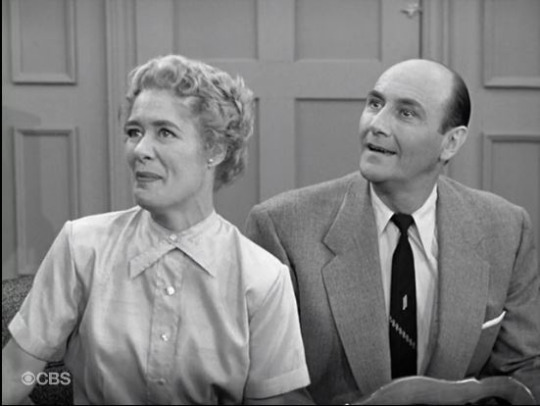
Milton Frome (Lawrence Chapman) played Sam, who Lucy Ricardo tried to fix up with Dorothy, in “The Matchmaker�� (1954). He played Milton Berle's agent in a "Lucy Saves Milton Berle" (1965). He also played a waiter in a 1972 episode of “Here’s Lucy” starring Donny Osmond.

Ray Kellogg (Gate Guard / Police Officer) played the barking Assistant Director (“Roll ‘em!”) in “Ricky’s Screen Test” (1954) and later appeared in “Bullfight Dance” (1955). He was seen on 7 episodes of “The Lucy Show” and two episodes of “Here’s Lucy.” In many of his appearances he played policemen or guards, just as he does here.
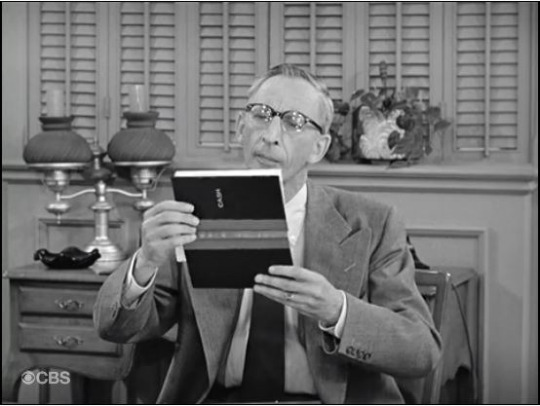
Charles Lane (Foster Phinney / Homer Bedloe / Billy Hacker) appeared in 7 films with Lucille Ball between 1933 and 1949. He was also heard on her radio show "My Favorite Husband". On "I Love Lucy," he played 4 characters and 2 more on "The Lucy-Desi Comedy Hour." He was cast as banker Barnsdahl on "The Lucy Show," but was released after 4 episodes so that Ball could hire Gale Gordon. He went from Desilu to Hooterville with his role of Homer Bedloe on "Petticoat Junction," which he also plays on "The Beverly Hillbillies".
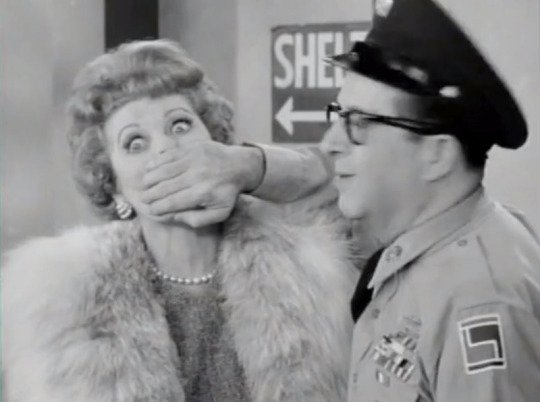
Phil Silvers (Shifty Shafer aka Honest John) gave Lucille Ball a cameo on his show "Sergeant Bilko" in 1959. In 1963, Ball and Silvers performed the classic ‘Slowly I Turn’ sketch for “CBS Opening Night.” In December 1966, Silvers guest-starred as Oliver Kasten in “Lucy and the Efficiency Expert”. A year later Ball and Silvers both had bit parts in the film A Guide for the Married Man (1967).
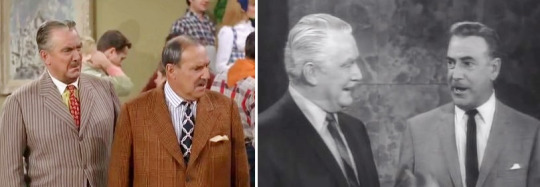
Roy Roberts (John Cushing / Judge) appeared with Lucille Ball in Miss Grant Takes Richmond (1949). On “The Lucy Show” he first appeared as a Navy Admiral in “Lucy and the Submarine” before creating the role of Mr. Cheever, the president of Mr. Mooney’s bank, a recurring character he played through the end of the series. On “Here’s Lucy” he played the Superintendent of the Air Force Academy in season two’s two-part opener. He also played doctors in “Lucy and the Astronauts” (1971) and in "Lucy is N.G. as an R.N." (1973).

Shirley Mitchell (Opal Clampett) became friends with Lucille Ball in the late 1940s when she was featured in 4 episodes of “My Favorite Husband.” Mitchell reunited with Lucille Ball on “I Love Lucy” playing Marion Strong, member of the Wednesday Afternoon Fine Arts League. She also played Mae Belle Jennings on "Petticoat Junction."

Joi Lansing (Gladys Flatt) first worked with Lucille Ball on “I Love Lucy” in “Desert Island” (1956) and returned to play Miss Long Neck in "Lucy Wants a Career" (1959). She did an episode of Desilu's "The Untouchables" and appeared for Desi Arnaz on an episode of "The Mothers-in-Law".
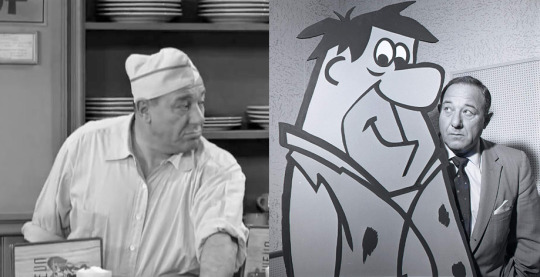
Alan Reed Jr. (Sheldon Epps / Buddy) is probably best remembered as the voice of Fred Flintstone, acting opposite Bea Benadaret (Cousin Pearl). He was heard with Lucille Ball on "My Favorite Husband" (1949). In 1963 he played a café owner in “Lucy Visits the White House”. In 1967, he made an appearance on the Desi Arnaz series “The Mothers-in-Law”.
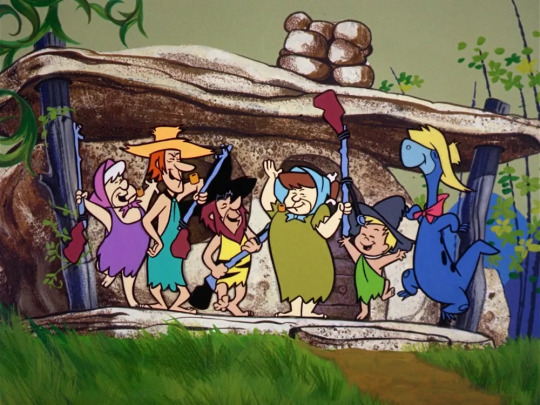
Most of the principal cast of "The Flintstones" (1960-1966) appeared on "The Beverly Hillbillies": Bea Benadaret (Betty), Alan Reed Jr. (Fred), and Mel Blanc (Barney) all appeared on the show. Jean Vander Pyl did not act on "The Beverly Hillbillies," but did appear on its sister show "Petticoat Junction" and voiced Maw on the cartoon "The Hillbilly Bears" (1966). All four also worked with Lucille Ball on radio and/or television. There was also an episode of "The Flintstones" titled "The Bedrock Hillbillies" (above) featuring animated characters named Granny and Jethro Hatrock with voice talent Howard Morris, John Stephenson, and June Foray, all of whom also worked with Lucille Ball.
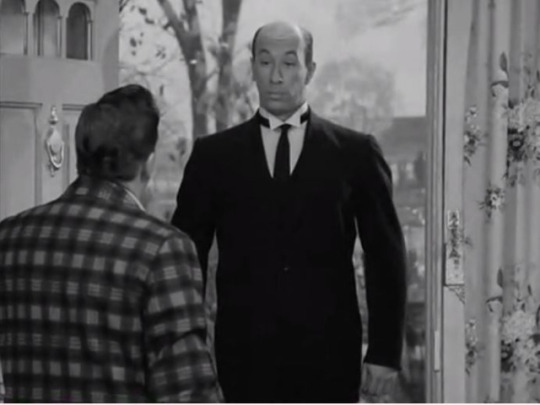
Richard Deacon (Dr. Klinger / Mr. Brubaker) made two guest star appearances on Desilu's “December Bride” in 1956 in one of which he played Desi Arnaz’s butler. It’s not surprising that he was cast as Tallulah Bankhead’s butler Winslow in “The Celebrity Next Door,” a 1957 episode of “The Lucy-Desi Comedy Hour.” In 1963 he played Harvey Rittenhouse in the Ball / Hope film Critic’s Choice. In October 1964, Deacon and Lucille Ball both played themselves on “Bob Hope Presents The Chrysler Theatre: Have Girls, Will Travel”. He was employed again by Desi Sr. as a regular on “The Mothers-in-Law” (1968-69). He was seen on two episodes of "Here's Lucy."
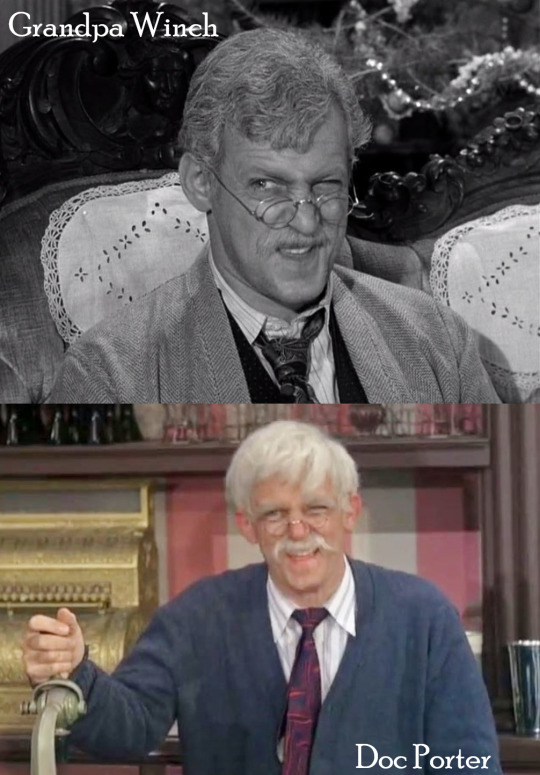
Paul Winchell (Grandpa Winch) was just 40 years old when he donned old age make-up to play Grandpa Winch in "Home for Christmas" (S1;E13). Four years later he was aged again to play Doc Porter on a two-part episode of "The Lucy Show" set in a the small town of Bancroft.
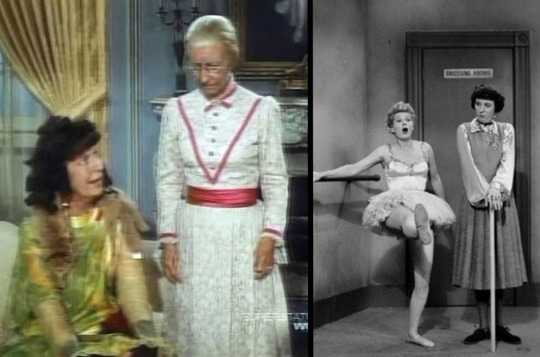
Mary Wickes (Adaline Ashley) was one of Lucille Ball's best friends of screen. She appeared on "I Love Lucy," "The Lucy Show," and "Here's Lucy," in addition to many other TV specials alongside Ball. The 1967 episode of "The Beverly Hillbillies" Wickes appeared on was aired between two of her "Lucy Show" appearances and featured Gail Bonney, who was seen on "I Love Lucy" and "The Lucy Show."

Eddie Albert and Eva Gabor (Oliver and Lisa Douglas) ~ were visitors to Beverly Hills from Hooterville, but both stars were also favorites of Lucille Ball. Gabor appeared in two episodes of "Here's Lucy", one as herself, and Albert played himself in a 1973 episode. In 1950, he co-starred with Lucille Ball in The Fuller Brush Girl.
Star Casting

John Wayne made a cameo appearance on "The Beverly Hillbillies". When asked how he wanted to be paid, he is best remembered answering back with: "Give me a fifth of bourbon--that'll square it." Wayne appeared as himself on "I Love Lucy" (1955) and "The Lucy Show" (1966). His uncredited cameo on "The Indians Are Coming" (S5;E20) was aired in 1967.
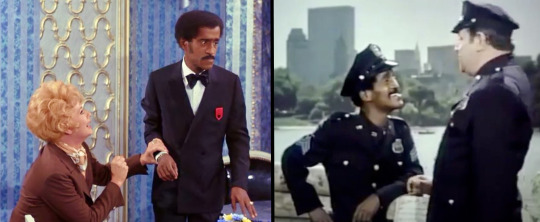
Sammy Davis Jr. (Sergeant Patrick Muldoon) made two appearances on the series during November 1968 episodes set in NYC. Although he plays a character here (an Irish cop!), he played himself on "Here's Lucy" in September 1970. His first "Hillbillies" appearance also features Lucy's friend and co-star Phil Silvers as Shifty Shafer (aka Honest John), a recurring character that was seen in eight episodes.
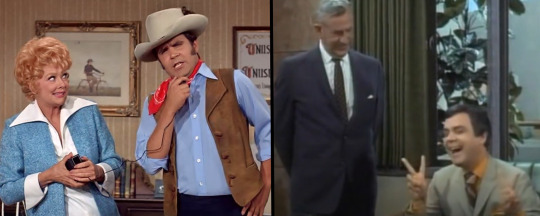
Impressionist Rich Little played himself in the season nine opener of "The Beverly Hillbillies." Mr. Drysdale convinces him to impersonate President Richard Nixon over the telephone to fool Jed. Nixon was one of Little's most popular impressions. When he played himself on a 1971 episode of "Here's Lucy," Nixon wasn't mentioned, but he did do his impression of John Wayne (see above).

Hedda Hopper played herself in "Hedda Hopper's Hollywood" (S3;E4) in 1964, an episode named after her newspaper column and television specials, one of which featured Lucille Ball. That same 1960 special featured Gloria Swanson, who did a cameo as herself in a 1966 episode titled "The Gloria Swanson Story" (S5;E12). Curiously, Hopper played herself in a 1955 episode of "I Love Lucy" titled "The Hedda Hopper Story." An episode of "The Lucy Show" titled "Lucy and the Lost Star" was intended for Swanson, but the lost star eventually cast was Joan Crawford.

Robert Cummings appeared as himself in "The Race for Queen" (S2;E19) playing the celebrity judge of the Queen of Beverly Hills beauty contest. He was known as Bob Collins on "The Bob Cummings Show" (aka "Love That Bob!"), which ran from 1955 to 1959. The same year it ended he played himself on a 1959 episode of "The Lucy-Desi Comedy Hour" set in Japan. He reprised the character of Bob Collins on a 1972 episode of "Here’s Lucy” (above) and returned the following season for another episode as a different Bob. His sitcom had featured many of the same actors as "The Beverly Hillbillies" and various Lucycoms, but especially Joi Lansing, Nancy Kulp, and Elvia Allman. Cummings' appearance on "Hillbillies" is primarily attributable to the fact that BH creator Paul Henning produced "The Bob Cummings Show"!
Other Common Cast Members
Jack Bannon, Wally Cox, Peter Leeds, Bobs Watson, Lyle Talbot, Doris Packer Eleanor Audley, Maurice Marsac, Leon Ames, Jesse White, George Barrows, Herb Vigran, Jean Willes, Norman Leavitt, Leon Belasco, Burt Mustin, Iris Adrian, Foster Brooks, Ted Eccles, Robert Foulk, Tristram Coffin, Byron Foulger, Gil Perkins, Hal Taggart, Robert Cummings, Natalie Schaffer, Mel Blanc, John McGiver, Don Rickles, John Carradine, Jacques Bergerac, Hans Conried, Murvyn Vye, Bernie Kopell, Barbara Morrison, Phil Arnold, Ellen Corby, Robert Carson, Barry Kelley, William Newell, Lurene Tuttle, Karen Norris, Hayden Rorke, Benny Rubin, Helen Kleeb, Bill Quinn, Frank J. Scannell, Irwin Charrone, Gail Bonney, Fritz Feld, Norma Varden, Murray Pollack, Jil Jarmyn, Olan Soule, John Gallaudet, George N. Niese, Dick Winslow, Tommy Farrell, Cliff Norton, Robert Osborne, Nestor Paiva, Larry J. Blake, Hans Moebus, Norman Stevans, Monty O'Grady, Steve Carruthers, and Bert Stevens.
~ Stay Tuned for Part 2 : Episodes ~
#The Beverly Hillbillies#Lucille Ball#The Lucy Show#I Love Lucy#Here's Lucy#TV#CBS#Frank Inn#Nancy Kulp#Bea Benadaret#Hedda Hopper#Rich Little#John Wayne#Sammy Davis Jr.#Eddie Albert#Eva Gabor#Mary WIckes#Paul Winchell#Richard Deacon#Alan Reed Jr.#Shirley Mitchell#Joi Lansing#Frank Wilcox#Elvia Allman#Phil Silvers#Ray Kellogg#Charles Lane#Roy Roberts#Donna Douglas#Irene Ryan
10 notes
·
View notes
Photo

Character Actress
Cynthia Chenault (born January 5, 1937) Film and television actress and producer/writer active from the mid-1950s to the present. She used the screen name Cindy Robbins in her acting credits.
Her first acting role on television was in 1955, in the episode Moonfire of the television western series Brave Eagle. In 1960, Robbins appeared as a ballerina in the "Bullets and Ballet" episode of Tightrope!.
Her last acting role in television was on the television comedy series McHale's Navy in 1964.
Her best-known role was that of Carol Porter, one of the daughters in the one-season situation comedy The Tom Ewell Show (1960–61). She also made two guest appearances on Perry Mason, including the role of Teddi Hart in the 1960 episode "The Case of the Treacherous Toupee" and the role of Mabel Richmond in the 1962 episode "The Case of Melancholy Marksman".
Her other television work consisted of appearances in comedy shows (Ensign O'Toole, December Bride (2 episodes), Father Knows Best, The Adventures of Ozzie and Harriet, Leave It To Beaver), McHale's Navy & military/action shows (Steve Canyon, Whirlybirds, Harbor Command), westerns (Wagon Train (3 episodes), Outlaws, The Tall Man), and dramas (Westinghouse Desilu Playhouse (2 episodes), General Electric Theater, Markham, The Lineup, Johnny Midnight, Tightrope, Dragnet). (Wikipedia)
8 notes
·
View notes
Text
Clássico dos anos 60, nova versão de Além da Imaginação está em desenvolvimento
New Post has been published on http://baixafilmestorrent.com/cinema/classico-dos-anos-60-nova-versao-de-alem-da-imaginacao-esta-em-desenvolvimento/
Clássico dos anos 60, nova versão de Além da Imaginação está em desenvolvimento
O diretor e roteirista Jordan Peele, autor do filme Corra! (Get Out), está desenvolvendo uma nova versão da clássica série Além da Imaginação (The Twilight Zone) para o CBS All Access, o serviço de streaming da CBS. Além disso, um longa para o cinema está sendo escrito por Christine Lavaf. A série original foi transmitida nos Estados Unidos de 1959 a 1964 pela CBS e teve 156 episódios, com roteiros de grandes escritores como Rod Serling, Richard Matheson, Charles Beaumont e George Clayton Johnson. Além da Imaginação apostou em tramas de ficção científica, fantasia e horror sempre com questionamentos morais e reviravoltas no final. O seriado é considerado um dos mais influentes da história tendo sido eleito, em 2013, pelo Writers Guild of America como a terceira melhor série escrita para a televisão.
Rod Serling, roteirista norte-americano e criador da série original, já era um nome de destaque na televisão americana durante a década de 1950, tendo escrito o episódio The Time Element, em 1958, da série Westinghouse Desilu Playhouse, transmitida pela CBS. Concebido inicialmente como o episódio piloto de Além da Imaginação, The Time Element narra a jornada de um homem que sonha repetidamente que volta no tempo para o ano de 1941, porém, não consegue alertar aos outros sobre o ataque de Pearl Harbor que estava prestes a acontecer. O texto foi rejeitado pela emissora, mas posteriormente descoberto por um produtor e exibido em Westinghouse Desilu Playhouse.
The Time Element foi um sucesso de crítica e de público, fator crucial para que a CBS decidisse apoiar a série concebida por Rod Serling. Em outubro de 1959, o episódio Where Is Everybody? é exibido pela CBS como o piloto de Além da Imaginação. Trata-se da história de um homem sem memórias que caminha por uma estrada na qual ele não encontra nenhuma pessoa conhecida. Rod Serling fazia a introdução das tramas, além de escrever a maior parte dos episódios, muitas vezes adaptando obras literárias de autores como Ambrose Bierce, Jerome Bixby e Damon Knight.
Além da Imaginação marcou época e abriu caminho para séries antológicas parecidas como The Outher Limits (1963-1965) e, recentemente, Black Mirror. Rod Serling vendeu a sua parte dos direitos sobre a série para a CBS e posteriormente criou Galeria do Terror (outra série de antologia que foi ao ar de 1970 a 1973). Também roteirizou o filme O Planeta dos Macacos (1968), baseado no romance homônimo de Pierre Boulle, em parceria com Michael Wilson. Fumante compulsivo, Rod Serling morreu aos 50 anos vítima de complicações em razão de uma operação de ponte de safena realizada em 1975. Depois de quase 20 anos, dois roteiros nunca antes produzidos de Serling foram transformados em um filme para televisão Twilight Zone: Rod Serling’s Lost Classics (1994).
Além da Imaginação já havia se tornado um cult na década de 80 e muitos jovens cineastas da época tinham uma conexão forte com os temas do seriado de Rod Serling. Em 1983, foi lançado No Limite da Realidade (Twilight Zone: The Movie), filme que teve a direção de John Landis, Steven Spielberg, Joe Dante e George Miller. O filme recria alguns dos episódios aclamados do seriado, como It’s a Good Life, sobre um menino com poderes sobrenaturais que aterroriza sua família; e Nightmare at 20,000 Feet, que conta a história de um passageiro de avião que avista uma criatura estranha na asa da aeronave. Na esteira do filme, a CBS produziu dois remakes da série Além da Imaginação: o primeiro foi ao ar de 1985 a 1989 e o segundo de 2002 a 2003. A série gerou ainda programas de rádio, games, livros, histórias em quadrinho, peças de teatro e até uma atração nos parques da Disney.
#Além da Imaginação#Charles Beaumont#fantasia#ficção científica#George Clayton Johnson#horror#Jordan Peele#Richard Matheson#Rod Serling#Twilight Zone
0 notes
Text

Aldo Ray and Lucille Ball on Westinghouse Desilu Playhouse (1958-1960)
8 notes
·
View notes
Link
As the television industry began to grow up in the 1950’s, a few writers and producers sought to utilize the medium in ways that they couldn’t in film. Certain topics were seen as being off limits at the movies; not because of censorship or the Hayes Office, but because of the huge costs involved in producing a major motion picture. The studios would purposely avoid making films that covered American social problems for fear of alienating audiences and reducing the box office. Television’s smaller budgets should have allowed for more experimentation, but the medium’s reliance on advertisers and local affiliates watered down any possible experimentation.
Rod Serling had embraced television and found great acclaim writing for many of the biggest anthology series of the time. He soon found the medium’s restrictions to be too creatively confining. Sponsors would take too active a role in each script, making changes both petty and severe. Lines that might be seen as referring to a competitor’s product would get cut. References to racial issues would definitely get removed because they might offend white viewers in the south. Serling found these restrictions stifling.
Serling eventually thought he’d figured out the key to producing the sort of programming that he thought could change opinions and improve the world- by dressing up his morality studies in supernatural and science fiction themes. He came up with the idea for an anthology series that would feature science fiction and fantasy themes which paralleled modern issues and social problems. He wrote a pilot script- The Time Element, but it initially gained little notice. The script was about a man who went back in time to try to warn the United States about Pearl Harbor. The script was shelved until the Westinghouse Desilu Playhouse needed another hour of programming. The script was chosen and became one of the highest rated hours on television that week.
CBS took notice of Serling’s success. The Twilight Zone was finally given a pilot order.
0 notes
